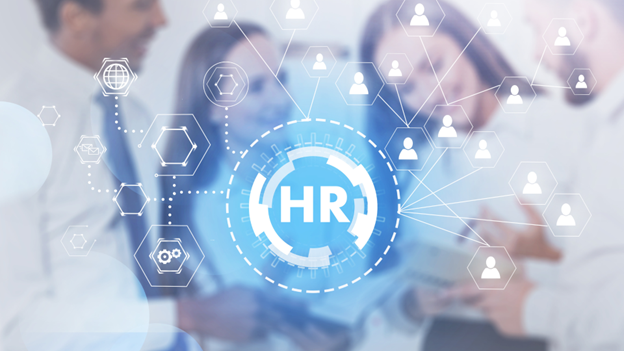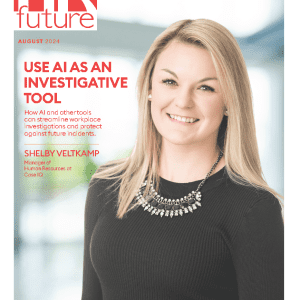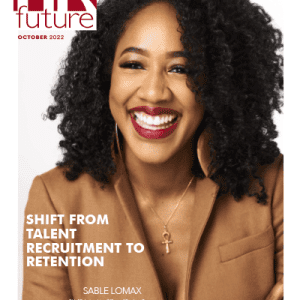In an era where agility defines success, HR leaders are reimagining workforce planning through the lens of digital transformation. No longer a static exercise, workforce planning is increasingly data-driven, cloud-enabled, and embedded into enterprise-wide strategies for greater operational efficiency and resilience.
Organizations must rethink their approach to forecasting talent needs, managing workforce dynamics, and aligning human capital with business outcomes. This transformation is not merely about adopting digital tools, but about evolving how HR contributes to core business planning.
- Enable smarter, faster talent forecasting
- Support real-time workforce visibility
- Integrate HR with financial planning
- Drive collaboration across departments
- Optimize talent allocation and reskilling
By working in close partnership with IT, finance, and operations, HR can create integrated, forward-looking workforce plans that support long-term growth and adaptability. In this new environment, understanding digital capabilities and data analytics is key to redefining workforce planning success.
From Reactive to Predictive: The New Workforce Paradigm
Traditional workforce planning often centered on short-term staffing gaps and budget constraints. Today, however, successful organizations are shifting to a predictive model. This new approach integrates real-time analytics, scenario planning, and cross-functional collaboration to anticipate future talent needs based on evolving business strategies.
Predictive planning uses historical data and advanced forecasting tools to model scenarios such as workforce attrition, market expansion, and organizational restructuring. This forward-thinking approach allows HR teams to proactively address challenges like talent shortages and skill mismatches before they impact productivity.
With the right digital infrastructure in place, HR teams can analyze turnover risks, identify upskilling opportunities, and model future workforce compositions aligned to business growth—all with unprecedented speed and precision. By doing so, HR leaders transform workforce planning from a reactive, administrative task into a strategic, business-critical process.
The Role of Cloud-Based ERP in Workforce Strategy
Enterprise Resource Planning (ERP) systems have long been the domain of finance and operations. But in a digitally transformed enterprise, ERP’s role is expanding to support HR and workforce planning as well. Cloud-based ERP platforms now integrate with Human Capital Management (HCM) systems, enabling a unified view of workforce data, financial metrics, and business performance.
This centralization allows HR leaders to:
- Forecast labor costs across regions or departments
- Align hiring plans with operational growth
- Ensure succession planning is financially viable
- Track ROI on workforce development initiatives
- Support compliance and reporting with real-time data
ERP tools are not just back-office utilities anymore—they’re becoming strategic enablers for HR. The ability to access real-time workforce insights, combined with financial and operational data, gives HR leaders the tools they need to make informed decisions faster.
Automation and Intelligence in Action
Automation is also reshaping workforce planning by minimizing repetitive tasks and allowing HR teams to focus on strategic priorities. Modern systems can automate headcount reporting, skills audits, and talent supply-demand modeling. Meanwhile, embedded analytics and artificial intelligence surface insights on where talent gaps will emerge or which roles may become redundant.
Machine learning algorithms can detect patterns in employee behavior, flag potential retention risks, and suggest proactive interventions. Chatbots and digital assistants are streamlining administrative interactions, such as benefits enrollment and PTO management, freeing HR staff to concentrate on higher-level functions.
This shift from manual data crunching to intelligent forecasting helps HR become a proactive driver of business agility, not just a reactive support function. It also improves employee experiences by ensuring workforce decisions are data-informed and aligned with individual career paths and business goals.
Strategic Budgeting: What HR Should Know About Tech Investment
As HR leaders champion digital tools for better workforce planning, understanding cost structures becomes essential. Technologies like ERP and HCM systems come with varying pricing models, particularly when implemented at scale across a global workforce.
For instance, cloud-based platforms typically use subscription-based pricing, which can vary based on user count, module complexity, and customization needs. These costs should be factored into multi-year workforce and budgeting plans—not just as IT expenditures, but as strategic investments in organizational agility.
Additionally, implementation and integration expenses—such as hiring third-party consultants, training internal teams, and migrating legacy data—must be considered as part of the total cost of ownership. Planning for future expansion, module upgrades, and support services is also essential for long-term success.
For readers looking to understand how such platforms are priced—and what factors influence total cost of ownership—this guide to Understanding Oracle NetSuite pricing offers valuable operational insight.
Building the Digitally Ready HR Organization
To fully harness the power of digital transformation in workforce planning, HR departments must evolve structurally and culturally. This includes:
- Reskilling HR professionals in data literacy and digital fluency
- Integrating HR tech strategy with broader business transformation initiatives
- Collaborating closely with Finance, IT, and Operations on digital planning tools
- Evaluating new technologies not only for efficiency but also for workforce enablement
Leadership buy-in is critical. Change management strategies must address resistance to new systems and promote a culture of innovation. HR must also adopt agile methodologies to iterate on planning processes and respond to business needs in real time.
Building a digitally mature HR function takes time and commitment, but the payoff is significant: more accurate workforce forecasts, stronger alignment with organizational goals, and better employee engagement outcomes.
Wrapping Up: Embracing Digital Tools to Future-Proof Workforce Planning
The future of workforce planning lies at the intersection of technology, data, and strategic vision. With increasing complexity in global operations, shifting workforce expectations, and competitive pressure, HR leaders must modernize their planning approach. Embracing digital transformation offers the necessary tools and insights to navigate these challenges effectively.
Whether you’re addressing succession gaps, expanding into new markets, or adapting to flexible work models, digital tools like cloud-based ERP and real-time analytics can provide the agility and clarity required to lead with purpose. These systems support dynamic, data-informed strategies that drive alignment between HR and business growth objectives.
- Evaluate current planning tools and identify digital gaps
- Leverage analytics to predict talent trends
- Align workforce planning with business KPIs
- Prioritize user training and adoption
- Monitor and optimize based on real-time insights
Ultimately, understanding the full picture of transformation costs, such as Oracle NetSuite license cost, helps organizations make smarter investments. When implemented thoughtfully, digital transformation empowers HR to become a proactive architect of organizational success, enabling businesses to thrive amid uncertainty and change.
Guest writer

























